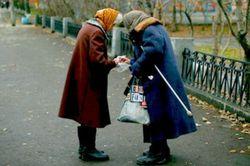
In the Russian Federation again recorded a natural population decline (deaths outnumber births). Bravura fanfare about Syria and the Crimea is a bit mute this info is important for the country, but the fact remains: the population decline of Russia, which was predicted by experts 3-4 years ago, when the heads of relevant ministries briefed the President about the successful demographic policy is fixed for the second year in a row. About it reports the Agency “Rosbalt”.
In accordance with the operative data of Rosstat, released in January of last year, the natural decline of Russia’s population (excluding migration growth), the results of 2014 amounted 25453 people. In addition, at the beginning of the current year results 2015 has recorded a decline of Russians in 27 of 719 people.
Of course, these indicators in Russia have been significantly worse over the past quarter century. Since 1992 until the beginning of 2000-ies each year, the population decreased on average from 700 thousand to almost one million people. However, in 2007, in this very negative trend has been a turning point. According to official statistics, approximately six years (until 2013), the decline in the population continuously declined.
Since 2009 head of the Ministry of health of the Russian Federation – Tatyana Golikova at first, and after it Veronica Skvortsova – the report to Vladimir Putin regularly reported: for the first time in 15 years (17 years, etc.) in Russia recorded natural population growth.
Nevertheless actually it was all or attempt of the issuance of wishful thinking, or else simply a weak representation of the basics of population statistics. Anyway, the results of the last five years, we can say only one thing really registered the fact of natural increase in Russia. The results of the counting at the end of 2013 show that the birth rate in Russia exceeded the death rate by 24 thousand people. As mentioned above, the following 2014 and 2015 Rosstat again began to record a growth loss.
Quite often, officials and journalists covering these topics, don’t know the difference between the total increase (decrease) of population and natural. However, the difference is significant: in the natural increase accounted for the data on mortality and fertility, and for the calculation of total – and migration dynamics. It turns out if to take into account the growth of immigration, it appears that only from 2011 to 2014, his data every year improved demographic indicators in Russia about 300 thousand people on average (data for 2015 yet, however, in all probability, they are roughly the same as in the past four years).
In this regard, if it were not of net migration (which is so Patriotic he wants the public), the population of Russia today would not 144,2 million people, and approximately 142,7 million. It turns out that the real figure would be less than in 2011, when Russia counted 142,9 million inhabitants. However, the problem is not with absolute figures, but with the newly discovered dramatic trend to reduce the number of people in the country.
A meeting of representatives of the Committee of civil initiatives, titled “Medical-demographic problems of the population of Russia” was devoted to the analysis of the causes of this trend. The report of Anatoly Vishnevsky, Director of the Institute of demography Higher school of Economics, says that over the past seven years the demographic situation in the country improved somewhat, however, it is predicted that this “success” to keep will fail. The expert believes that this is due to “peculiarities of the age structure of population of Russia”.
At the same time, Wisniewski, like some other experts, would prefer to today’s demographics “from Adam”. The expert sees the root causes for the advantage in WWII. This refers to the so-called “demographic hole”, which, in accordance with this concept, the state should fall approximately every 20-25 years. In a way, and occurred when the fertility decline 1968 – then entered the childbearing age reduced generation of the population of the RSFSR, born during the war. In this period was born only about 1.8 million children.
In accordance with this theory, another decline was due to begin for another twenty years. However, in 1988, in the RSFSR, on the contrary, there was a surge in the birth rate. This year, were born almost 2.4 million children. In addition, in 1989 was born the 2.2 million children. This theory is not considered another important indicator influencing the increase (decrease) of population – level mortality. So, in 1988 the mortality rate amounted to 1.5 million people, and in the most “prosperous” year for the reign of Putin — 2013-m — about 1.9 million people.
Socio-economic disasters that are associated with the conduct after the collapse of the USSR and liberal reforms, when millions of people had no means for existence, Wisniewski called the “turbulence of the nineties”. The expert acknowledged that this “turbulence” has had some impact on the demographics, but, apparently, not too big. At the same time, one of the reasons for the high mortality rate according to the expert, poor funding of the health system.
However, this is also not the only reason, according to the moderator of the round table in the OIG Yevgeny Gontmakher, is “not a demographic, and humanitarian disaster” that occurs in Russia. According to his forecast, in Russia in the next decade we should expect economic growth thanks to “the viciousness of the model of the Russian economy”. And accordingly, will not grow and the population.







